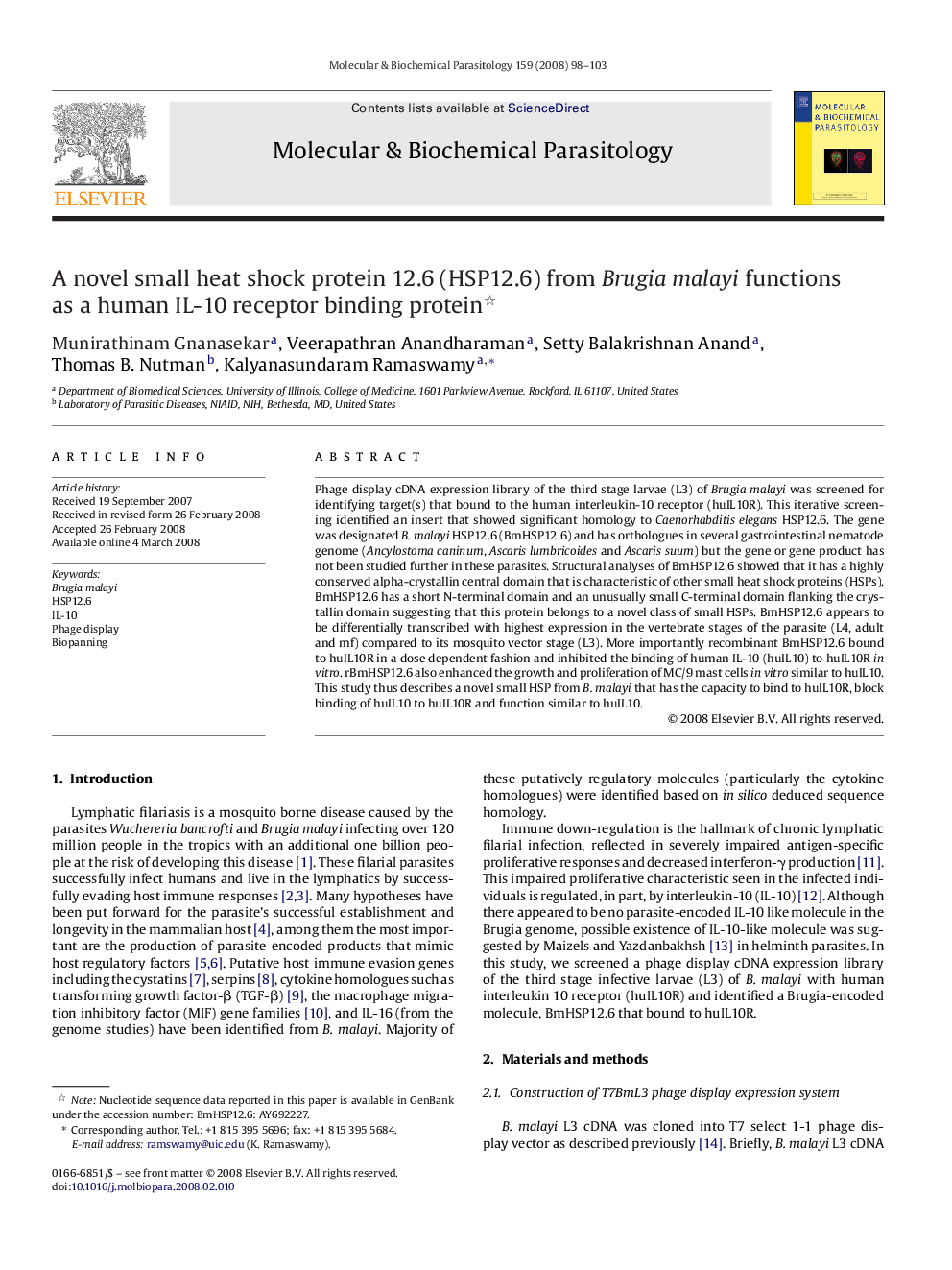| Article ID | Journal | Published Year | Pages | File Type |
|---|---|---|---|---|
| 2830132 | Molecular and Biochemical Parasitology | 2008 | 6 Pages |
Abstract
Phage display cDNA expression library of the third stage larvae (L3) of Brugia malayi was screened for identifying target(s) that bound to the human interleukin-10 receptor (huIL10R). This iterative screening identified an insert that showed significant homology to Caenorhabditis elegans HSP12.6. The gene was designated B. malayi HSP12.6 (BmHSP12.6) and has orthologues in several gastrointestinal nematode genome (Ancylostoma caninum, Ascaris lumbricoides and Ascaris suum) but the gene or gene product has not been studied further in these parasites. Structural analyses of BmHSP12.6 showed that it has a highly conserved alpha-crystallin central domain that is characteristic of other small heat shock proteins (HSPs). BmHSP12.6 has a short N-terminal domain and an unusually small C-terminal domain flanking the crystallin domain suggesting that this protein belongs to a novel class of small HSPs. BmHSP12.6 appears to be differentially transcribed with highest expression in the vertebrate stages of the parasite (L4, adult and mf) compared to its mosquito vector stage (L3). More importantly recombinant BmHSP12.6 bound to huIL10R in a dose dependent fashion and inhibited the binding of human IL-10 (huIL10) to huIL10R in vitro. rBmHSP12.6 also enhanced the growth and proliferation of MC/9 mast cells in vitro similar to huIL10. This study thus describes a novel small HSP from B. malayi that has the capacity to bind to huIL10R, block binding of huIL10 to huIL10R and function similar to huIL10.
Related Topics
Life Sciences
Biochemistry, Genetics and Molecular Biology
Molecular Biology
Authors
Munirathinam Gnanasekar, Veerapathran Anandharaman, Setty Balakrishnan Anand, Thomas B. Nutman, Kalyanasundaram Ramaswamy,
